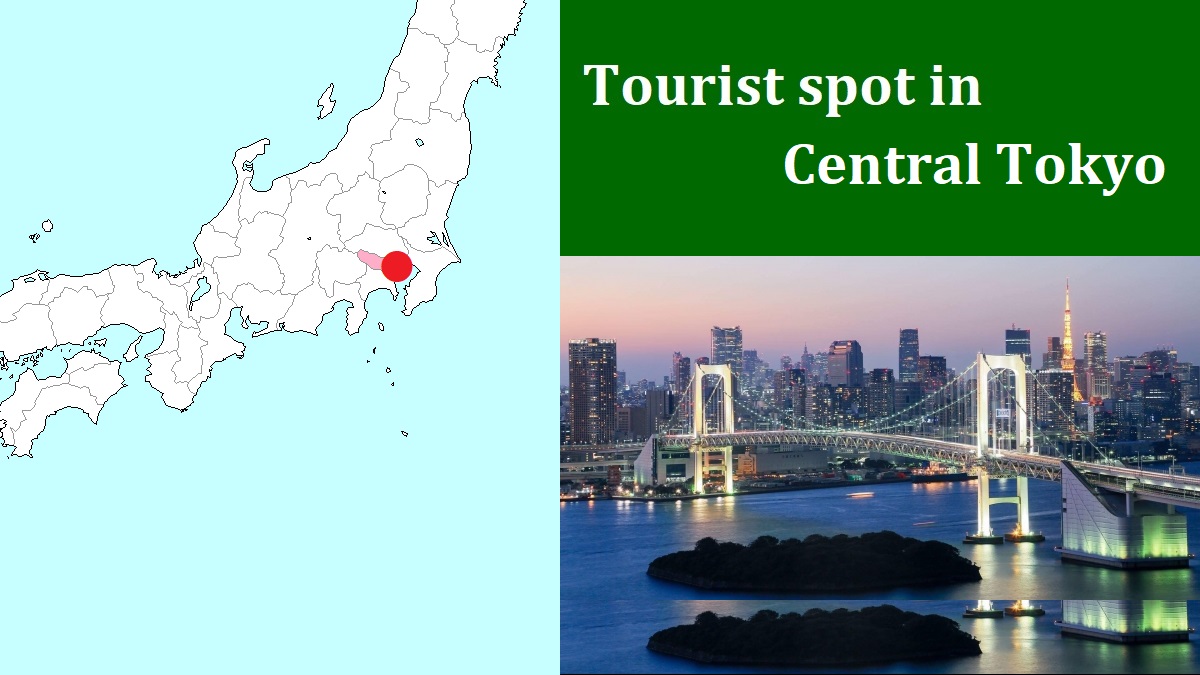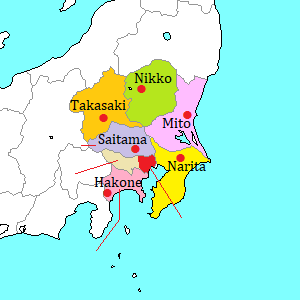Shinjuku [新宿]
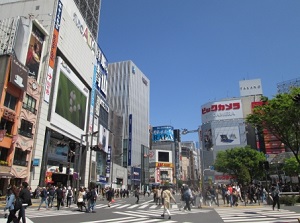
East side of Shinjuku station
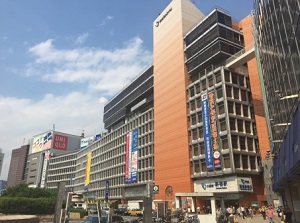
West side of Shinjuku station
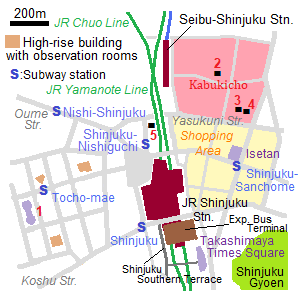
1) Tokyo Metropolitan Government Tower
2) Samurai Museum 3) Shinjuku Golden-gai
4) Hanazono Shrine 5) Omoide Yokocho
Shinjuku is a subcenter of Tokyo located about 6 km west of Tokyo station.
The location is just on the opposite side of Tokyo station on the loop of JR Yamanote Line.
There is Shinjuku station in the center of the area.
It is not only one of the main stations in central Tokyo but also the terminal station of the railways toward the westen or southwestern suburbs of Tokyo.
So more than 3.7 million people a day use this station, and the multitude is the top in the world.
Whenever you visit here, perhaps it is always crowded.
We see almost businessmen and travelers in Tokyo station, but in Shinjuku station we can see many various people such as shoppers, students.
So we feel the different relaxed atmosphere from Tokyo station.
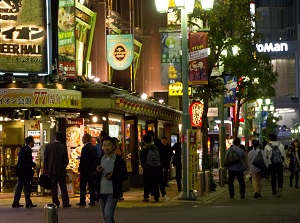
Shinjuku in the evening
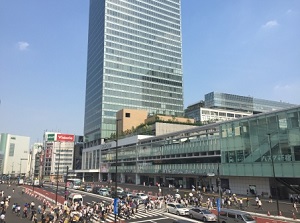
Shinjuku Expressway Bus Terminal
On the south side of the station, there is the Japan's largest Shinjuku Expressway Bus Terminal.
From here, many express buses for all regions in Japan except Hokkaido start.
Four big department stores attach the station.
There are LUMINE over the station, Keio Department Store and Odakyu Department Store on the west side, and LUMINE EST on the east side.
East side of Shinjuku station
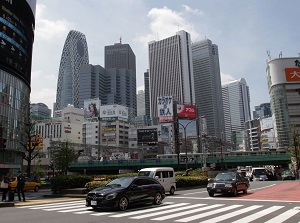
High buildings from east side of Shinjuku station
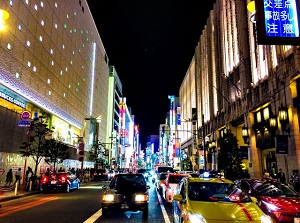
Around Isetan department store
The east side of the station is a shopping town.
In the center of the area, there are well-established department store Isetan.
There are several buildings for special shops such as fashion, book, furniture.
And, there are also many restaurants and pubs.
To southeast of this district, there is Shinjuku Gyoen garden.
West side of Shinjuku station
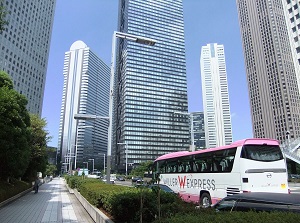
High buildings in the west side of Shinjuku station
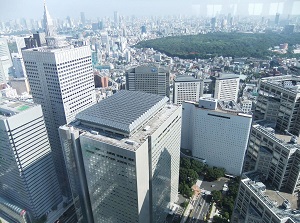
View to Shinjuku Gyoen from a high building
The west side of the station is a business town.
There are more than 30 high-rise buildings (mainly 100 to 250 meters high) and most of them are office complexes.
A few buildings have observation rooms, and the most popular spot of them is the Tokyo Metropolitan Government Tower.
And there is Omoide Yokocho (思い出横丁) to the north of Shinjuku station.
It is a popular district with many small pubs and restaurants.
You can enjoy the Japanese-style pub cheaply.
South side of Shinjuku station
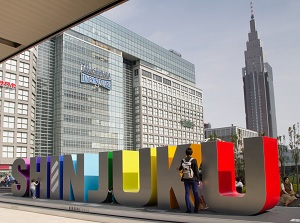
South exit of Shinjuku station
& Takashimaya Times Square
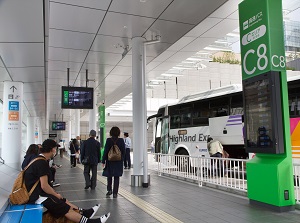
Shinjuku Expressway Bus Terminal
On the south side of the station, Koshu street leading to Yamanashi Prefecture runs from east to west.
The southern side of the street has been redeveloped recently.
Shinjuku Southern Terrace, a pedestrian deck, along JR lines connects some buildings in southern area and Takashimaya Times Square, a commercial complex.
As above, there is Shinjuku Expressway Bus Terminal on this side.
Tokyo Metropolitan Government Tower (東京都庁)
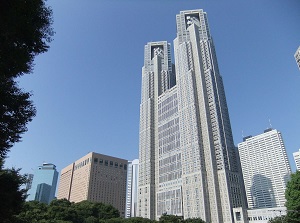
Tokyo Metropolitan Government Tower
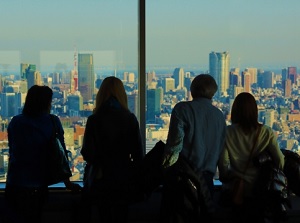
Observatory room
Tokyo Metropolitan Government Tower is the building of Tokyo Metropolitan Government, and has been used since 1991.
It is located about 0.7 km west of Shinjuku station, and is a landmark of Shinjuku.
The main building is 243 meters high, and was designed by Tange Kenzo (1913-2005, a global architect).
It is said that he brought in the image of Notre Dame Cathedral in Paris.
There are two obsevetion rooms (the north side and the south side) on the 45th floor.
We can go up to either room in elevator directly. The admission is free.
This the popular spot to view Mt.Fuji.
Of course, the chance is only the fine day from late autumn to early spring.
Each room is closed twice a month, but the day is different from the other. So we can enter there surely.
(Except the following days are closed all:
December 29-31, January 2-3, and October 18 (for inspection of whole building). January 1 is open.)
Kabukicho district (歌舞伎町)
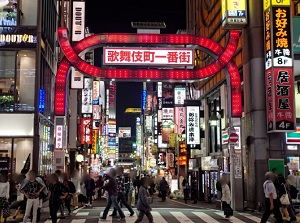
Main entrance of Kabukicho
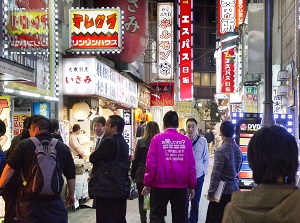
Street in Kabukicho
Kabukicho is the amusement district located about 300 to 800 meters north of Shinjuku station, and it is on the north side of Yasukuni street.
In this district, there are a few movie theaters and a lot of manga cafes, bars, nightclubs, "kyabakura" (Female staffs cater to males seeking drink and attentive conversation.), "host clubs" (Male staffs cater to females seeking drink and attentive conversation.), adult entertainment shops and "love hotels" (short-stay hotel for mainly making love).
It is said that the total number of such facilities is over 3,000 in this district.
They almost do business at night, so it is often called "Sleepless Town".
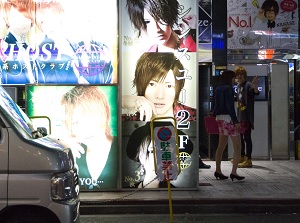
A host club in Kabukicho
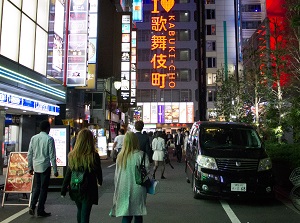
Street in Kabukicho
Originally after the World War II, there was a plan to built a Kabuki theater.
But the plan wasn't realized, then it has been remained in the name of town.
Of course, this district has some dodgy mood.
Recently the authorities give rise to regulations and often patrol here.
Samurai Museum (サムライミュージアム)
Samurai Museum is a private museum to introduce Japanese samurai spirit for foreign tourists.
It is located at just center of Kabikicho district and about 300 meters north of Yasukuchi street.
Japanese swords, armors, matchlock guns, etc. are displayed.
And you can experience the performance of samurai.
Shinjuku Golden-gai (新宿ゴールデン街)
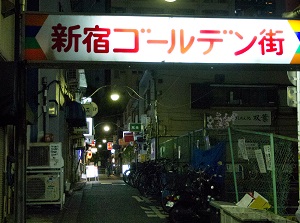
Entrance of Shinjuku Golden-gai
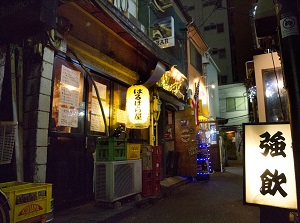
An alley in Shinjuku Golden-gai
Shinjuku Golden-gai is an area that there are very small pubs within about 100 meters square.
It is in the east part of Kabukicho district.
About 200 pubs are in this small area, and they line along some narrow alleys.
If several guests visit a pub, the pub is full.
Therefore, it is an unspoken rule not to stay in a pub for a long time.
It is a good style to visit some various pubs in a night.
Caution! All alleys are in private land.
All pubs require you to observe the following rules.
- Don't smoke tobacco and cigar.
- Don't loiter, shout and sing.
- Don't drink on the alley.
- Don't take photos and videos without permission.
- Don't climb on the buildings and fences.
Hanazono Shrine (花園神社)
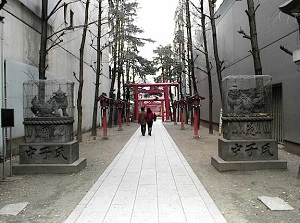
Entrance of Hanazono Shrine
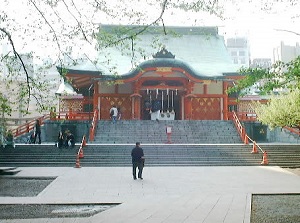
Hanazono Shrine
Hanazono Shrine is a Shinto shrine, and is near Shinjuku Golden-gai.
This shrine had already been in Shinjuku area, when Edo government was established in the early 17th century.
Since that it has been the guardian deity of Shinjuku area.
How to get here
- About 15 minutes from Tokyo, about 7 minutes from Shibuya by JR lines.
- Nearest stations of subway.
Shinjuku (●M08 Marunouchi Line, ●S01 Shinjuku Line, ●E27 Ooedo Line)
Shinjuku-Sanchome (●M09 Marunouchi Line, ●F13 Fukutoshin Line, ●S02 Shinjuku Line)
Shinjuku-Nishiguchi (●E01 Ooedo Line)
Tocho-mae (●E28 Ooedo Line)
Nishi-Shinjuku (●M07 Marunouchi Line)

